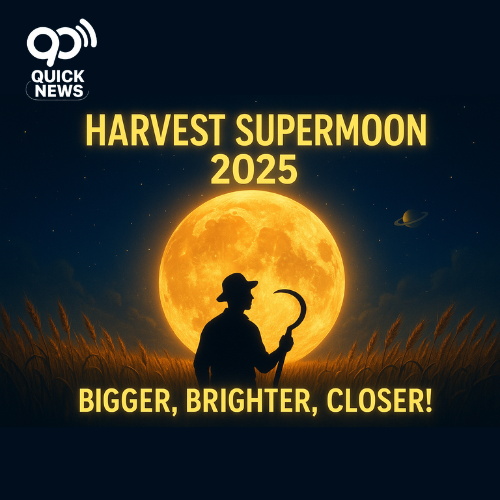On Monday, October 6, 2025, skywatchers across the globe, including Pakistan, will witness the first supermoon of the year — popularly known as the Harvest Moon. This dazzling lunar event will shine bright into the autumn skies, marking the end of the harvest season in the Northern Hemisphere.
According to NASA, the moon will officially turn full at 11:47 p.m. EST (3:47 p.m. UTC on October 7), but it will appear bright and round for several nights before and after its peak. The best viewing time will be at dusk on October 7, when the golden-orange moon rises dramatically on the eastern horizon.
🌾 Why is it called the Harvest Moon?
The name comes from farming traditions, where the bright full moonlight helped farmers gather crops late into the night. While the Harvest Moon often falls in September, in 2025 it occurs in October, making this event extra special.
🌌 A Supermoon to Remember
This year’s Harvest Moon doubles as a supermoon, meaning it will appear larger and brighter than usual because it is at its closest point to Earth — about 224,599 miles (361,457 km) away, nearly 10% closer than average.
Stargazers may also catch glimpses of the Draconid meteor shower on October 8, though the bright moonlight might outshine some meteors.
🔭 Best Viewing Tips
- Find an unobstructed eastern horizon (hills or rooftops work best).
- The golden glow is most striking 15–20 minutes after moonrise.
- A pair of stargazing binoculars or a telescope can reveal lunar craters and lava plains.
🌍 What’s Next in October 2025?
The skywatching fun doesn’t stop here. Two comets — Comet Lemmon (C/2025 A6) and Comet SWAN R2 (C/2025 R2) — will make close approaches later in the month, coinciding with the Orionid meteor shower (Oct 21–22). The next full moon, the Beaver Moon, will rise on November 5, marking the largest supermoon since 2019.
For detailed updates, check authentic sources like NASA, Space.com, and local coverage from Dawn News.



